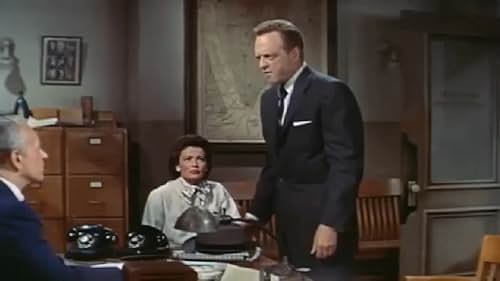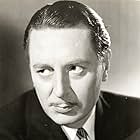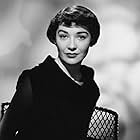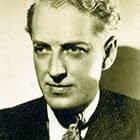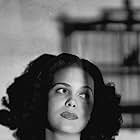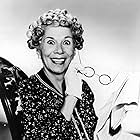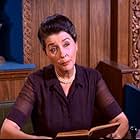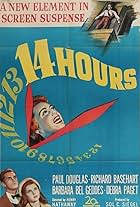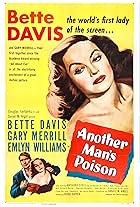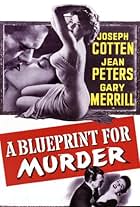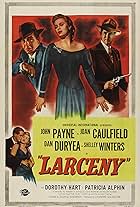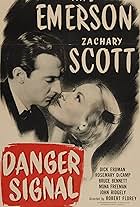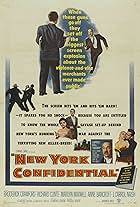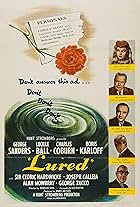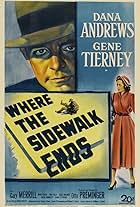IMDb RATING
6.7/10
3.5K
YOUR RATING
An aspiring young writer insinuates herself into the life of a Broadway producer only to meet an unexpected fate.An aspiring young writer insinuates herself into the life of a Broadway producer only to meet an unexpected fate.An aspiring young writer insinuates herself into the life of a Broadway producer only to meet an unexpected fate.
- Director
- Writers
- Stars
Mabel Albertson
- Sylvia
- (uncredited)
Edward Astran
- Party Guest
- (uncredited)
Bea Benaderet
- Mrs. Franklin Walsh
- (uncredited)
Mary Benoit
- Party Guest
- (uncredited)
Nesdon Booth
- Police A.P.B. Man
- (uncredited)
Paul Bradley
- Party Guest
- (uncredited)
Steve Carruthers
- Party Guest
- (uncredited)
- Director
- Writers
- All cast & crew
- Production, box office & more at IMDbPro
Featured reviews
I greatly enjoyed this Cinemascope, Stereo-Sound romp, but mainly as a Guilty Pleasure, as it's a film very much of it's time, with mismatched acting styles, lush, unbelievable sets, a central premise that doesn't make much sense (lending your expensive apartment to a just-met down-and-out writer while your wife's away),and an early attempt to make visual sense of the then-new wide-screen process.
Why do I like it? Ginger Rogers is way over the top, popping on and off screen with snappy diva one-liners, like Margo Channing on pep pills; Peggy Ann Garner plays a subversive Lolita, crazy-seductive and irresistible, and you can even spot Aaron Spelling towards the end in a bit part as a theatre employee.
The palette is loaded with pastel colors so popular in the 1950's, and the whole thing is sort of a mild domestic whodunit whipped up into an anemic Douglas Sirk confection. Great it ain't, but because of Rogers, Van Heflin, Gene Tierney (who has very little to do but does it beautifully) and Reginald Gardner, I found it greatly entertaining.
Why do I like it? Ginger Rogers is way over the top, popping on and off screen with snappy diva one-liners, like Margo Channing on pep pills; Peggy Ann Garner plays a subversive Lolita, crazy-seductive and irresistible, and you can even spot Aaron Spelling towards the end in a bit part as a theatre employee.
The palette is loaded with pastel colors so popular in the 1950's, and the whole thing is sort of a mild domestic whodunit whipped up into an anemic Douglas Sirk confection. Great it ain't, but because of Rogers, Van Heflin, Gene Tierney (who has very little to do but does it beautifully) and Reginald Gardner, I found it greatly entertaining.
Five years earlier, this drawingroom drama would have been filmed in small screen b&w. But the year is 1954 and film audiences are staying home with their new-fangled little black boxes. So a big budget studio like TCF takes what amounts to an "Ellery Queen in Manhattan" plot, gussies it up in lavish color, stretches the screen to Cinemascope length, loads up the marquee with big names, and sends the result out to compete with Lucille Ball and Milton Berle. I don't know how well the strategy succeeded commercially, but I enjoyed the movie then and still do.
As a whodunit, the mystery's only partially successful—not enough suspects and too convoluted to follow. At the same time, the pacing sometimes sags in ways that undercut the suspense. Still, the 95 minutes does add up to a gorgeous tapestry, thanks to expert art direction, set decoration, and a well-upholstered cast. And who could hold together a sometimes-confusing storyline better than the always-reliable Van Heflin. Also, I expect urbane writer-director Nunnally Johnson fit comfortably with the sophisticated Manhattan setting and show-biz personalities. So, it's not surprising that he gets off some insider innuendo. Catch the cocktail party shot at gossip columnist Hedda Hopper, known for her bizarre headgear; I expect Johnson was settling an old score there. Then too, having the ingénue (Garner) turn up mysteriously pregnant is rather daring for the straitjacketed Production Code period. Also, watch for the skinny young actor (Oliver) interviewed by Heflin near film's end. That's future TV mogul Aaron Spelling getting a proverbial foot in the door.
Anyway, the film provides an entertaining glimpse of drawingroom drama getting a face-lift during the early years of the television challenge.
As a whodunit, the mystery's only partially successful—not enough suspects and too convoluted to follow. At the same time, the pacing sometimes sags in ways that undercut the suspense. Still, the 95 minutes does add up to a gorgeous tapestry, thanks to expert art direction, set decoration, and a well-upholstered cast. And who could hold together a sometimes-confusing storyline better than the always-reliable Van Heflin. Also, I expect urbane writer-director Nunnally Johnson fit comfortably with the sophisticated Manhattan setting and show-biz personalities. So, it's not surprising that he gets off some insider innuendo. Catch the cocktail party shot at gossip columnist Hedda Hopper, known for her bizarre headgear; I expect Johnson was settling an old score there. Then too, having the ingénue (Garner) turn up mysteriously pregnant is rather daring for the straitjacketed Production Code period. Also, watch for the skinny young actor (Oliver) interviewed by Heflin near film's end. That's future TV mogul Aaron Spelling getting a proverbial foot in the door.
Anyway, the film provides an entertaining glimpse of drawingroom drama getting a face-lift during the early years of the television challenge.
Van Heflin is a theatrical producer who's suspected of murder in "Black Widow," a 1954 20th Century Fox Technicolor film directed by Nunnally Johnson. The film is set in New York among the sophisticated Broadway set, and the cast is full of familiar faces: Ginger Rogers, Gene Tierney, George Raft, Reginald Gardiner, Peggy Ann Garner, Virginia Leith, Otto Kruger, Mabel Albertson, and even Aaron Spelling.
Garner plays a young writer who, new to New York, keeps making increasingly important friends until she winds up an apparent suicide in the apartment of producer Peter Denver and his beautiful actress wife, Lottie. Soon, however, it's revealed that she was murdered, and Heflin is the prime suspect. During his own investigation as he tries to keep George Raft from putting him in prison, he learns that the sweet young thing may have been young, but she wasn't sweet.
Though a little slow at times, this is a highly entertaining film with its shots of New York and panoramic views from luxury apartments. The acting is wonderful. Ginger Rogers is great as the glamorous, acid-tongued Iris, a well-known actress with a ne'er do well husband, played effectively by Gardiner. Gene Tierney looks lovely but has a supporting role in this as Heflin's wife. The film sports two former child actors: Peggy Ann Garner as the murder victim and Skip Homeier as one of her love interests. Newcomer Virginia Leith is Homeier's sister and Garner's confidante. Garner looks appropriately innocent.
The looping in this film is very obvious for some reason - at least on television, some of the sound was fuzzy and then boom! the dubbing would come in. A very minor point. The mystery is intriguing, the glamor high, the dialogue sharp - an engrossing way to spend one's time.
Garner plays a young writer who, new to New York, keeps making increasingly important friends until she winds up an apparent suicide in the apartment of producer Peter Denver and his beautiful actress wife, Lottie. Soon, however, it's revealed that she was murdered, and Heflin is the prime suspect. During his own investigation as he tries to keep George Raft from putting him in prison, he learns that the sweet young thing may have been young, but she wasn't sweet.
Though a little slow at times, this is a highly entertaining film with its shots of New York and panoramic views from luxury apartments. The acting is wonderful. Ginger Rogers is great as the glamorous, acid-tongued Iris, a well-known actress with a ne'er do well husband, played effectively by Gardiner. Gene Tierney looks lovely but has a supporting role in this as Heflin's wife. The film sports two former child actors: Peggy Ann Garner as the murder victim and Skip Homeier as one of her love interests. Newcomer Virginia Leith is Homeier's sister and Garner's confidante. Garner looks appropriately innocent.
The looping in this film is very obvious for some reason - at least on television, some of the sound was fuzzy and then boom! the dubbing would come in. A very minor point. The mystery is intriguing, the glamor high, the dialogue sharp - an engrossing way to spend one's time.
When I watched this movie on DVD, the plot and characters seemed familiar. I realized that the story was based on an episode in the "Peter Duluth" series by Patrick Quentin. For some reason, they changed the character's name to Peter Denver - maybe they thought it was easier to pronounce.
"Patrick Quentin" was a pen name used by four different writers in various combinations from around 1930 into the 1960s. They also used the names Q. Patrick and Jonathan Stagge. See the Wikipedia article on Patrick Quentin for more details.
The best known Patrick Quentin novels are those featuring Peter Duluth, a Broadway producer, and his wife Iris, a famous actress. They solve mysteries in the glamorous New York theatre world - a bit like Nick and Nora Charles. Most of these novels have the word "puzzle" in the title - "Puzzle for Fools", "Puzzle for Players", etc. "Black Widow", published in 1952, was an exception to the title pattern. All of the Duluth novels I have read have been very entertaining "Golden Age" mysteries, and I highly recommend them to mystery fans. In fact, all of the books by Patrick Quentin or any of his pseudonyms that I have read have been very good mysteries.
I was surprised that this script was given such high-end treatment - Cinemascope Technicolor and stereo sound. The script is a bit old fashioned, with its narration and flashbacks, and the cast is so-so. I think Peter Duluth was intended to be a more dashing character than the rather frumpy Van Heflin could convey. Cary Grant would have been perfect in the role. I still found it an entertaining 90 minutes. But check out the Peter Duluth books for a truly good read.
"Patrick Quentin" was a pen name used by four different writers in various combinations from around 1930 into the 1960s. They also used the names Q. Patrick and Jonathan Stagge. See the Wikipedia article on Patrick Quentin for more details.
The best known Patrick Quentin novels are those featuring Peter Duluth, a Broadway producer, and his wife Iris, a famous actress. They solve mysteries in the glamorous New York theatre world - a bit like Nick and Nora Charles. Most of these novels have the word "puzzle" in the title - "Puzzle for Fools", "Puzzle for Players", etc. "Black Widow", published in 1952, was an exception to the title pattern. All of the Duluth novels I have read have been very entertaining "Golden Age" mysteries, and I highly recommend them to mystery fans. In fact, all of the books by Patrick Quentin or any of his pseudonyms that I have read have been very good mysteries.
I was surprised that this script was given such high-end treatment - Cinemascope Technicolor and stereo sound. The script is a bit old fashioned, with its narration and flashbacks, and the cast is so-so. I think Peter Duluth was intended to be a more dashing character than the rather frumpy Van Heflin could convey. Cary Grant would have been perfect in the role. I still found it an entertaining 90 minutes. But check out the Peter Duluth books for a truly good read.
"Black Widow" is a well-written, though old-style, entertaining mystery. The story is taken from a novel by Patrick Quentin, a sound mystery-writer.
However the essence of the movie lies in the magnificent cinemascope photography, colors and visual effects. Note that most scenes have in the background large windows or terraces wide-open on the spectacular, terrific New York sceneries. Even the furniture of the various apartments is carefully chosen and placed, with beautiful artistic effects. Outstanding is the brief scene inside the dark bar, with the costumers merged into a liquid light: an evident reminiscence of Edward Hopper's paintings.
Alas! All these visual beauties are seriously damaged, if not destroyed, by the TV version, which essentially shows just half of the screen.
The performances by all interpreters are generally good and professional. A major (personal) disappointment is that Gene Tierney does nothing. She's not even in the list of suspects, since she was thousands of miles away from New York during the whole murder affair. She just sits silently on the background, adding her incomparable beauty and natural refinement to the magnificent New York views. It should be added that George Raft seems completely out-of-role... but I'm too fond of this guy to be able to criticize him.
"Black Widow" is a good film; hopefully someone will be able to see it on the wide screen.
However the essence of the movie lies in the magnificent cinemascope photography, colors and visual effects. Note that most scenes have in the background large windows or terraces wide-open on the spectacular, terrific New York sceneries. Even the furniture of the various apartments is carefully chosen and placed, with beautiful artistic effects. Outstanding is the brief scene inside the dark bar, with the costumers merged into a liquid light: an evident reminiscence of Edward Hopper's paintings.
Alas! All these visual beauties are seriously damaged, if not destroyed, by the TV version, which essentially shows just half of the screen.
The performances by all interpreters are generally good and professional. A major (personal) disappointment is that Gene Tierney does nothing. She's not even in the list of suspects, since she was thousands of miles away from New York during the whole murder affair. She just sits silently on the background, adding her incomparable beauty and natural refinement to the magnificent New York views. It should be added that George Raft seems completely out-of-role... but I'm too fond of this guy to be able to criticize him.
"Black Widow" is a good film; hopefully someone will be able to see it on the wide screen.
Did you know
- TriviaNunnally Johnson originally offered the role played by Ginger Rogers to Tallulah Bankhead, who called the writer-producer and, in a 25-minute phone conversation, gave him her reasons for rejecting the role. Rogers turned the part down as well, but had a change of heart after Johnson sent her a letter asking her to reconsider, on the proviso that she could take the relatively minor role and make it into a star-turn.
- GoofsWhen the suicide note is discovered by the Denvers, it is lying, uncreased, on the table. Later, during questioning, the detective produces it, folded up, from his pocket. A cop would never mishandle and mutilate evidence that way.
- Quotes
[opening narration]
Peter Denver: The Black Widow, deadliest of all spiders, earned its dark title through its deplorable practice of devouring its mate.
- Crazy creditsOpening credits are shown over the background of a spider web made by a black widow.
- ConnectionsFeatured in Ginger Rogers at Twentieth Century Fox (2007)
- SoundtracksTheme from 'Dance of the Seven Veils'
from "Salome"
by Richard Strauss
[Played occasionally throughout the picture]
- How long is Black Widow?Powered by Alexa
Details
- Release date
- Country of origin
- Language
- Also known as
- La viuda negra
- Filming locations
- 1515 Broadway, Manhattan, New York City, New York, USA(Hotel Astor exterior near Times Square)
- Production company
- See more company credits at IMDbPro
Box office
- Budget
- $1,095,000 (estimated)
- Runtime1 hour 35 minutes
- Color
- Aspect ratio
- 2.55 : 1
Contribute to this page
Suggest an edit or add missing content


